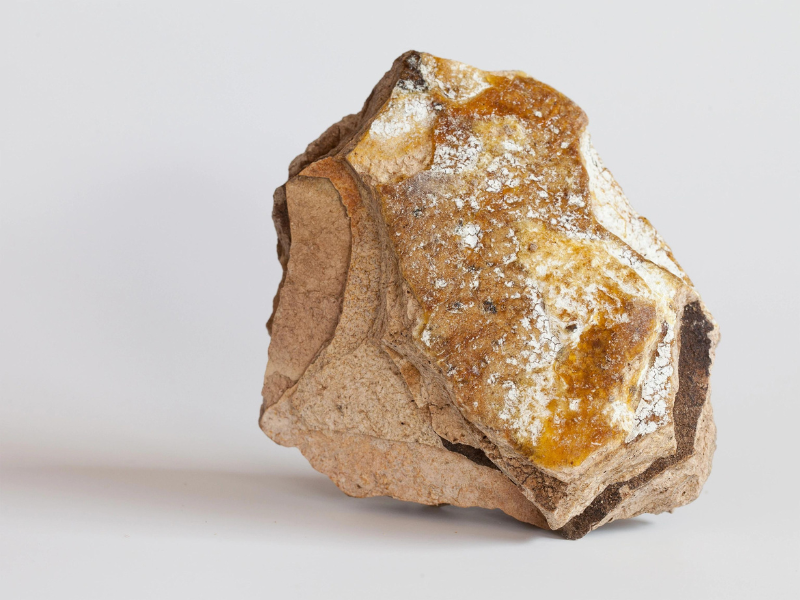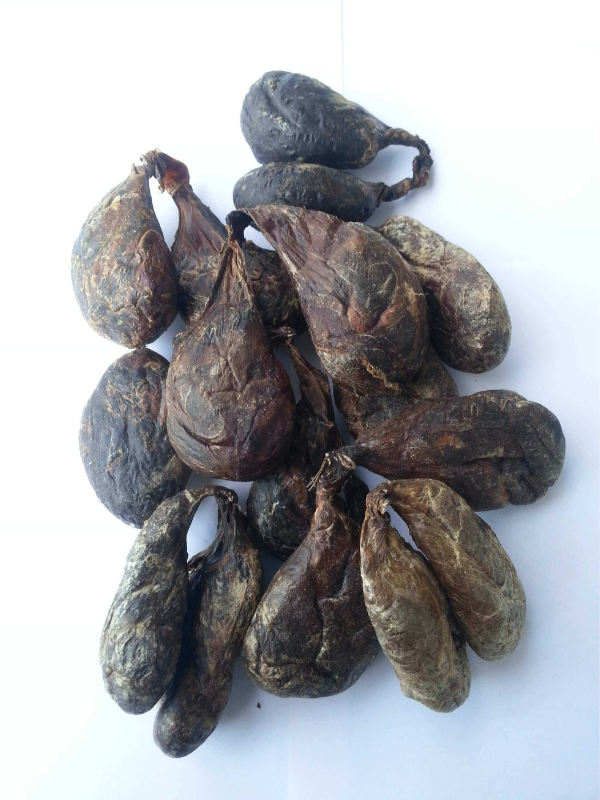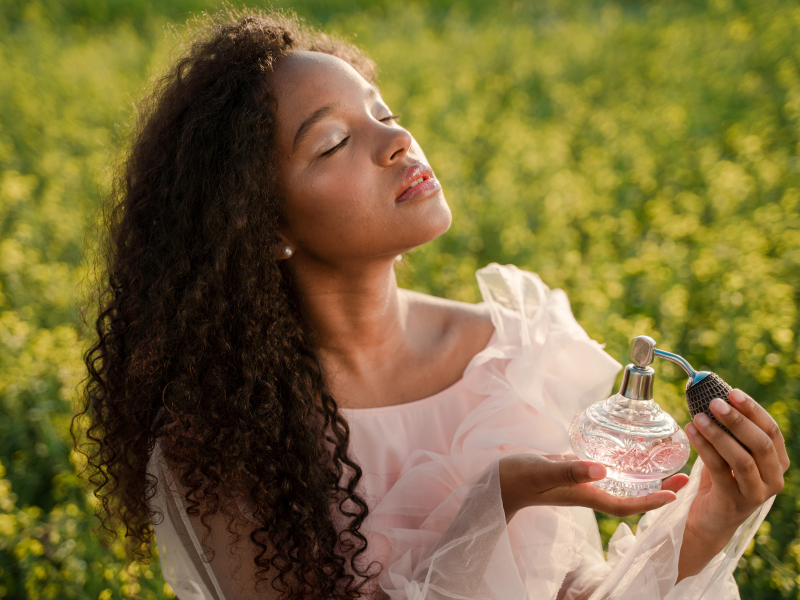When spirituality is compared to perfume, the main notes would be peace, freedom, compassion, humility, unity, heart notes of purity, universal equality, devotion, sincerity and wisdom and the sublime base note of unconditional love.
This kind of perfume would never be made from animal ingredients. How do you choose a perfume? According to the ingredients, the scent you like or that describes your personality? Basically, we choose a perfume without knowing what is in it. We found a scent that describes us, that we like and how we want others to perceive us. It’s time to find out what might be in your perfume.
The perfume is a concentration of different scents, from fruits, various plants and animals. But u perfumes contain many ingredients that you would never put in your own fragrance and which you don’t want in your perfume.
Many popular and designer perfumes can be full of animal ingredients, including anal secretions and feces. Yes, you read that right. Making perfume is an ancient art, and some of the ingredients still used today come from animals.
When you think of perfume, animals don't come to mind. However, perfume ingredients are obtained using cruel methods that involve animals. In addition, most perfumes it is tested on animals in order to ensure their "safety" for people.
In general, it will be difficult to find out the complete ingredient of the perfume because certain ingredients can be hidden under the label "scent". Manufacturers usually do not reveal the "secret ingredients" of perfumes so that the competition would not copy them or so that the potential consumer would not give up buying.
Animal ingredients used in perfumes are:
- Cibet: anal secretion from cat-like animals native to Asia and Africa
- Ambergris: whale excrement
- Musk: animal anal secretions
- Milk: animal milk secretions, composed of manure, fats and proteins
- Castoreum: beaver anal secretions
- Hyraceum: fossilized mammalian urine
You can find out here animal ingredients in cosmetics.
You wouldn't put these ingredients on your face if they were included in a cosmetic product, so why would they be acceptable in a fragrance?
The listed ingredients may be listed on the declarations, but they may also be listed only as "fragrance" or "fragrance". Many of them today are synthetically produced, that is, they do not originate directly from animals. However, then we need to ask ourselves what synthetic versions of these ingredients are made of and what long-term impact it has on our health and our planet.
Check out Colabo perfumes for both women and men here.
Let’s explain in more detail how animal perfume ingredients actually come about
Ambergris or gray amber is a waxy-like aromatic substance and originates from the digestive tract of the humpback whale. It comes out of the mouth like sputum, that is vomiting. While fresh, ambergris is dark in color and has an unpleasant smell. Under the influence of the sun, sea water and atmosphere, it takes on a lighter color, from silver-gray to golden-yellow, until it finally becomes completely white. It gives the perfume a woody, earthy, musky note. Also, it helps the fragrance to last longer on the skin. The value of this substance is so great that it is considered "sea gold".

Many countries ban the trade in amber as part of a general order against whaling and exploitation, although it is not covered by the Convention on International Trade in Endangered Species as a waste product. Most commercially collected amber comes from the Bahamas.
Today, due to scarcity and cost, it has been largely replaced by synthetics.
Castoreum is the excretion of beavers. In the wild it is excreted mixed with urine to mark its territory. Castoreum comes from the anal gland, the substance is secreted by male and female beavers from "bags" located near the tails. Beavers use greasy, waxy secretions to protect their fur from water and to mark their territory.

A fragrance similar to the combination of vanilla and raspberry with floral notes, ie castoreum, brings information about the health of the beaver and helps to distinguish between family members and strangers. In addition to the perfume industry, castor oil is also common in the food industry, such as vanilla-flavored ice cream.
When the castoreum is fresh, it is a sticky liquid from yellow and milky to gray in color, depending on the species of beaver and its sex. This liquid is then dried to a solid substance that is used as a perfume ingredient. In dead animals, the entire castoreum gland is removed, which is traditionally preserved by drying.
Usually beavers are no longer hunted for their fur or castoreum, so in order to acquire a sticky ingredient, beavers must be anesthetized and the castoreum gland breastfed by a human. The procedure is quite harsh and due to the inconvenience and cost to the industry, castor oil from live beavers is now rarely used. Keep in mind that some industries can afford a castoreum, and we do not take this fact one hundred percent into account. There is everything on the Internet, including castoreum and perfumes that contain castoreum.
Cibet is the secretion of the civet cat species that lives in Asia and Africa. In nature, animals use it to mark territory and attract mates. The perfume industry uses it to provide a distinctive scent, and also acts as an odor preservative.

To make it easier to collect musk - or civet - wild animals are caught and placed in small cages in which limited space makes it easier for farmers to handle the animal. Conditions on civet farms do not take into account even the most basic welfare needs of animals brought from the wild. In addition to the catastrophic conditions, the animals are forcibly secreted. Attempts to breed civets in captivity have failed several times. Who knows how many wild civets are kept on farms in Ethiopia and other parts of Africa still.
Although many manufacturers have now stopped using civet in favor of synthetic musks, large quantities are still produced and covertly used. However, synthetic musks they are not necessarily a humane alternative to real civet, as they may have been developed by painful animal experiments. The only perfumes without cruelty are indeed those that have been thoroughly researched and found to have reputable animal welfare policies.
Hyraceum is fixed a mixture of urine and feces which is produced by a mammal resembling a large guinea pig, and is called Rock hyrax, Rock badger, Rock rabbit, Dassie or Cape hyrax native to Africa. It is a territorial animal that lives in large colonies in caves and rock crevices throughout Africa and the Middle East. Because hyrax have lived in the same areas for generations, their feces and urine are compressed and petrified and become almost like fossils.
Its use in perfumery is quite new, but it is becoming increasingly popular because it can replace the civet and castoreum without the need to hunt or torture animals.
Kasturi is excretion or musk of male deer Moschidae which has become endangered, although since 1979 this creature is now happily protected by CITES (Convention on International Trade in Endangered Species of Wild Fauna and Flora). These deer live in Nepal, India, China, Mongolia, Pakistan and Siberia. Kasturi comes from a gland located between the back and the rectum. Musk is a perfume ingredient, or "note", that is traditionally extracted from the animal's anal gland. In high concentrations it smells like feces. The ingredient evaporates slowly so the scent lasts a long time. This makes it the "base note" in the perfumery.
Musk is a common list of ingredients that can come from a variety of animals. In addition to beavers, civets and deer, musk can also be obtained from turtles, crocodiles and snakes. In these animals, musk extracts from the anal glands or glands located in the mouth. The use of musk decreased, which is not surprising, because a large amount of musk was needed to produce only a kilogram of perfume ingredient.
It is known that the smell of drops of natural musk oil in a handkerchief can still be felt 40 years later.
Today there is a huge array of synthetic musks. A huge amount of dollars to research the perfume industry has been invested in creating alternatives to this basic ingredient.
As synthetic chemists became better at producing large quantities of perfume ingredients at low cost, the availability of synthetics enabled the industry to reach the mass market for the first time. The low cost of synthetics that mimic nature benefits industries much more than the original animal ingredient, which is expensive.
We want to be in harmony with nature, distilling earthly beauty into precious perfumes. But the real origins of animal musk are horrible and brutal, so we have to hide those aspects so as not to ruin the beautiful “natural” story we tell ourselves and our consumers. Namely, manufacturers often package the story into images of nature, flowers and fields to highlight what they offer, while not mentioning animal ingredients.
Spread the word about these perfume ingredients - many people simply do not know this dark secret about the origin of animal musks.
Is there a need to smell pleasant at the cost of animal suffering? We know that there are plant-based perfumes that are also deep, long lasting and have a rich scent. Animals should be able to live in peace without threats to their existence and without suffering. They should be able to live, wander, run - or whatever. Their lives should not be at the mercy of human whims and interests.
Is it possible to find vegan non-toxic perfume or in other words, a perfume made without animal ingredients, which has not been tested on animals and is not toxic to humans, the planet and animals? If it is!
Fortunately, there are companies that produce perfumes without animal and synthetic ingredients. One of them is Colabo.

The idea of Colabo is inspired by pure beauty – nature. Thanks to the natural extracts contained in fragrances, they tell the story of places, journeys, events, people, their emotions and memories.
This brand is based on the principle that nature is a source of life and inspiration. They accept the responsibility of caring for present and future generations. Perfumes made with great surrender and the belief that something can be made better.
Colabo compositions are created in cooperation with the most famous perfume makers in France. They drew inspiration from nature’s aromas, which they believe are the essence of each fragrance family.
Goal was to use fragrance and smell as the medium of emotions, for which time is no limitation:
- Fragrance plays an extraordinary role in building memories – it allows you to recall special moments from the past – travels, places, people especially important to you;
- By shaping emotions, influencing the mood of the moment, smell allows us to tell a story about ourselves – it is the colour of the present and an important part of our image;
- By positively influencing our well-being, the fragrance allows us to act with additional energy – and boldly create the future.
All COLABO products consist of at least 90% ingredients of natural origin.
Focus on a clean ingredients list while maintaining the multidimensional fragrance. COLABO products are simply: natural extracts contained in the composition, alcohol and water.
The nature of each fragrance, its intensity and durability can be determined by natural extracts. They have listed essential extracts and their country of origin on the packaging of each product.
Thanks to the presence of many extracts in the composition, COLABO fragrances are rounded and complex, telling many stories, retaining the charm of memories and emotions for a long time.
For the COLABO brand, nature is a priority, we care for natural habitats and protect animals from any harm. Everything we do is based on the following principles:
The products are suitable for vegans, do not use ingredients of animal origin.
No animal testing.
Packaging ideas are based on the less waste philosophy, which is why components are recyclable and / or made of recycled materials.
Colabo’s priority is to use only good ingredients, they cooperate with suppliers with the highest standards in terms of production methods and respect for the environment. They do not use GMOs. Their products are manufactured in accordance with the ISO 22716: 2009 standard and meet the requirements of the ISO 9001: 2015 quality management system.
Beauty and simplicity in a sustainable form: Colabo knows how limited the raw materials they use are, so they made sure that their product has as little impact on the environment as possible, while maintaining its safe formula and economic availability.
- autumn wooden covers with FSC certification and 50% recycled insert
- Recycled bottle label in 90%
- 100 ml glass bottle - can be recycled after separation from the sprayer
- paper outer packaging - removable label, folding box, insert.
- packaging is based on water-based paints, which make the packaging completely recyclable
- eliminated the use of cellophane
- all packaging elements made in the EU - human beauty also means respect for human rights and work
These are perfumes that do not test on animals.
Image source:
www.bmvfragrances.com/productcategory/castoreum-perfumery-base
www.nationalgeographic.com/news/2012/9/120830-ambergris-charlie-naysmith-whale-vomit-science/
www.worldlandtrust.org/species/mammals/african-civet/

